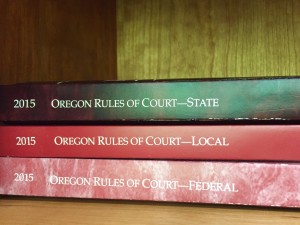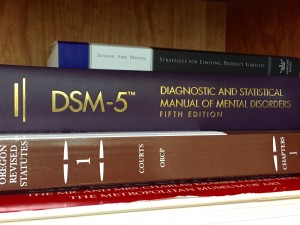Developing and Following Good Standard Operating Procedures (“SOPs”) and Crew Resource Management (“CRM”) Procedures Are the Keys to Avoiding Aviation Fatalities
The National Transportation Safety Board (“NTSB”) recently released its statistical data calculating transportation fatalities across all modes of transportation in 2011. There were 494 fatalities in aviation. The breakdown was as follows: general aviation, 444; air taxi, 41; foreign/unregistered, 9; airlines, 0; commuter, 0.[1]
In comparing the 2011 data against the prior decade or so, there are certainly positive signs. But, like all raw statistics, the numbers are most useful when integrated into a longitudinal data comparison from which conclusions are drawn. The NTSB fatality statistics draw a conclusion that might not be obvious from the 2011 data alone: Human error absolutely dominates as the leading cause of aviation fatalities (and injuries).
There are two keys to avoiding aviation fatalities: developing and following good SOPs and CRM procedures. This article will examine some of the persistent human causes of aviation accidents, many of which are merely outgrowths of the failure of aviation organizations to develop, adhere to, and not willfully disregard SOPs. The second cause of aviation fatalities examined in this article is the failure of flight deck crews to follow CRM procedures. Complications that lead to failure to follow CRM procedures include factors such as cockpit chaos; multi-lingual cockpits; failure to maintain cockpit discipline; surprise; and failure, during emergencies, to rely on the crew member with the most flight time, if appropriate given the constitution of the crew as a whole.
Accidents Can Be Avoided Through Proper Cockpit Procedures and Compliance With SOPs
On September 16, 2013, NTSB Member Robert Sumwalt (“Member Sumwalt”) gave a presentation to the Southern California Aviation Association[2] on the importance of SOPs. Member Sumwalt, quoting from an NTSB accident report, noted that, “[w]ell-designed cockpit procedures are an effective countermeasure against operational errors, and disciplined compliance with SOPs, including strict cockpit discipline, provides the basis for effective crew coordination and performance.”[3]
Member Sumwalt then presented facts about what the accident data show regarding crew-caused accidents. In an NTSB study of 37 crew-caused air carrier accidents between 1978 and 1990, procedural errors, such as not making required callouts or failing to use appropriate checklists, were found in 29 of the 37 (78%) reviewed accidents. The accident data also show that, with respect to turbine-powered operations (2001-2010), the NTSB identified at least 86 accidents involving lack of adequate procedures, policies, or checklists, or lack of flight crew adherence to procedures, policies, or checklists. These accidents resulted in 149 fatalities.[4]
Developing Effective SOPs
The development of SOPs in various industries has been accomplished through a variety of regulatory bodies, industry groups, and volunteerism. One of the first groups to establish such guidelines was the International Conference on Harmonisation (ICH), which defines SOPs as “detailed written instructions to achieve uniformity of the performance of a specific function.” The international quality standard (“ISO”) 9001 essentially requires the establishment of SOPs for any manufacturing process that could affect the quality of the product. Although ICH’s implementation of the ISO 9001 SOPs was in the context of clinical drug trials, a substantially similar system has been expanded to other industries.[5]
In the context of aviation, the SOP provides a flight crew with a step-by-step guide to effectively and safely carry out operations. A particular SOP must not only achieve the task at hand but also be understood by a crew of various backgrounds and experiences within the organization. SOPs can also be developed over time to incorporate improvements based on experience, accidents, near misses, or innovations from other manufacturers or operators to suit the needs of a particular organization. SOPs can also provide employees with a reference to common business practices, activities, or tasks.[6] New employees use SOPs to answer questions without having to interrupt supervisors to ask how an operation is performed.[7]
Although reference is made to ISO 9001 in the context of clinical trials, the ISO 9000 family of standards is related to quality management systems and designed to help organizations follow consistent procedures to meet the needs of customers and other stakeholders.[8] “AS 9000” is the Aerospace Basic Quality System Standard–an interpretation developed and adopted by virtually all the major aerospace manufacturers. The current version is AS 9100C. A new version of the standard will be published in September 2015 if the ISO members vote favorably in March 2015.[9]
The Failure of Flight Crews to Comply With SOPs and the Consequences
During his remarks on flight crew error, Member Sumwalt cited a Boeing study of accident prevention strategies where the data suggested that the single most important factor in prevention of hull loss accidents over a ten-year period was pilot flying (PF) adherence to SOPs. Member Sumwalt noted that SOPs are typically not followed for three specific reasons. He discussed each reason, and then used data from an NTSB investigation, or preliminary cause report, as support or illustration for each of the three reasons.
The reasons SOPs are typically not followed are:
(1) the organization lacks adequate SOPs;
(2) the organization doesn’t adhere to their SOPs; and
(3) flight crews intentionally disregard SOPs.
SOPs should be clear, comprehensive, and readily available in the manuals used by flight deck crew members.[10] Member Sumwalt provided three real-life corollary examples:
- The Organization Lacks Adequate SOPs – Crash of East Coast Jets, Hawker Beechcraft BAe 800, on July 31, 2008, Owatonna, Minnesota (8 fatalities)
The NTSB found that, although as a charter operator, East Coast Jets was not required to incorporate SOPs into its operations manual, if it had done so, it may have supported the accident pilots in establishing cockpit discipline and, therefore, a safer cockpit environment. An example was provided where the SOP identifies the triggering event, designates which crewmember performs the action or callout, what the callout is, and what the action is.
- The Organization Fails to Adhere to Its Established SOPs – Crash of Cessna 310, N501N, July 10, 2007, Sanford, Florida (5 fatalities)
In this case the organization did not adhere to SOPs. The aviation director could not locate the SOP manual, which was viewed as merely a training tool. The aircraft was to be used only for company business, but the accident flight was a personal flight. The Pilot in Command (“PIC”) must possess an Airline Transport Pilot (“ATP”) Certificate/Rating, but the PIC did not possess the necessary ATP. The last three maintenance discrepancies had not been addressed. The NTSB noted that these lapses were contrary to industry guidelines directing that procedures should be written in accordance with the organization’s operating methods, and once the procedures are in place, the organization should make every effort to follow those procedures. Having a strong commitment to standardization and discipline were among the key elements of safe operations observed in a Boeing study. Cockpit procedural language is tightly controlled to maintain consistency and to avoid confusion from non-standard callouts. Callouts and responses should be done verbatim.[11]
- Flight Crews Intentionally Disregard Established SOPs – Hard Landing of US Airways Express, January 19, 2010, Charleston, West Virginia
The NTSB probable cause determination was “the flight crewmembers’ unprofessional behavior, including their non-adherence to sterile cockpit procedures by engaging in non-pertinent conversation, which distracted them from their primary flight-related duties and led to their failure to correctly set and verify the flaps.” Intentional crew non-compliance was a factor in 40% of the worldwide accidents reviewed.[12]
NTSB Member Sumwalt concluded by noting that well-designed SOPs are essential for safety. Making a strong commitment to procedural compliance should be a core value of the organization. The SOPs must not merely exist, but they must be religiously followed as a way of doing business.
Well-Coordinated CRM is a Crucial Part of Accident Prevention
CRM[13] is a set of training procedures for use in environments where human error can have devastating effects. Used primarily for improving air safety, CRM focuses on interpersonal communication, leadership, and decision making in the cockpit.
CRM grew out of an NTSB analysis of the crash of United Airlines flight 173 where the plane, a DC-8, ran out of fuel while troubleshooting a landing gear problem over Portland Oregon.[14] The NTSB issued its landmark recommendation on June 7, 1979, to require CRM training for airline crews. A few weeks later, NASA held a workshop on the topic, endorsing this innovative training.[15] United Airlines was the first airline to provide CRM training for its cockpit crews in 1981.[16]
Since that time, CRM training concepts have been modified for application to a wide range of activities where people must make dangerous time-critical decisions. These arenas include air traffic control, ship handling, firefighting, and medical operating rooms.[17]
The Difficulty of Precisely Executing CRM Procedures In a Multicultural Cockpit
Multiculturalism in the cockpit is a largely recent phenomenon. Globalization and shrinking militaries around the world have led to a decrease in the availability of trained pilots, a lack of homogenous flight crews, and the emergence of multicultural cockpits. In 2005, a Helios Airways Boeing 737-300, with its pilots incapacitated by hypoxia after they failed to recognize a cabin pressurization system malfunction, provides a good example of what can happen when communication and crew resource management break down in the multicultural cockpit.[18] All 121 people on the airplane were killed when the 737 depressurized and ran out of fuel, the engines flamed out, and the airplane crashed, after what was to have been a flight from Larnaca, Cyprus, to Prague, Czech Republic, with a stop in Athens.
In its final report on the accident, the Hellenic Air Accident Investigation and Aviation Safety Board said the crew had failed to recognize that the cabin pressurization mode selector was in the wrong position. The Helios crew exhibited poor CRM before takeoff and during climb, and the difference in their nationalities and primary languages–the captain was German, the first officer was Cyprian–contributed to poor communication during the event. A blaring cabin altitude warning horn and the illumination of master caution lights degraded the crew’s cognitive abilities and processes. Inter-cockpit communications were reduced, perhaps in part because English was a second or third language for the crew.[19]
The CRM Lessons Learned From Air France 447–“Crew Coordination Vanished”
On March 27, 1977, two Boeing 747s crashed on the single runway on the Spanish island of Tenerife, killing 583 people. More than 35 years later, it is still measured by the number of casualties, and is by far the worst aviation disaster in history. One aspect of the accident, unlike many tragic and significant disasters, is that the non-aviation community was fixated on the Tenerife crash, the individuals involved, and exactly what the sequence of events was. Arguably the next time both the aviation community and the non-aviation community became as fixated on an aviation disaster was the 2009 crash of Air France 447.[20]
Within four and a half minutes in the early hours of June 1, 2009, an Airbus A330-200 operating as Air France Flight 447 from Rio de Janeiro to Paris, departed from cruise flight at 35,000 feet and descended into the Atlantic Ocean, killing all 216 passengers and 12 crewmembers. Glimpses of what may have gone wrong emerged from the several interim reports issued by the French Bureau d’Enquetes et d’Analyses (BEA) during the long investigation. In July, 2012, the BEA issues a nearly 300-page final report.
According to the report, the trouble began when the A330’s pitot tubes were obstructed by ice crystals, causing the various air data sources to produce unreliable airspeed information. Reacting as designed, the autopilot and autothrottle disengaged, and reverted to a lower control law that provides fewer protections against flight-envelope deviations. Startled, the pilot flying (“PF”) inadvertently commanded a steep nose-up pitch change while leveling the airplane’s wings. The flight crew–a copilot and a relief pilot filling in for the resting captain–recognized the loss of reliable airspeed data but did not conduct the associated checklist procedure. As a result, “[c]onfusion reigned on the flight deck, and crew coordination vanished.” [21] Without automatic angle-of-attack protection, the airplane entered a stall. The crew either believed that the stall warnings were spurious or mistook the airframe buffeting as a sign of an overspeed condition. When the resting captain was called to return to the flight deck, he continued to apply nose-up flight inputs, when, at such a low altitude, the only possible chance to get the plane back into the flight envelope would have been nose-down inputs. In addition, the PF almost immediately took back priority without any callout and continued piloting. The priority takeover by the PF contributed to the de-structuring of the task-sharing between the pilots. No recovery action was taken, and the A330 remained in a stall as it descended into the sea.
Additional sections of the BEA final report comment on the fragmented nature of the augmented crew, and the fact that some junior officers had far more flight hours in type than some of the more senior crew members, further eroding the opportunity for effective CRM in a surprise situation.
SOPs and CRM Must be Properly Implemented and Adhered To
Disciplined implementation of, and adherence to, SOPs is inseparable from the disciplined implementation of, and adherence to, CRM. Although this article only scratches the surface on data supporting this conclusion, it is an irrebuttable presumption that if flight crews fully embrace SOPs and CRM, flying will be safer.
[3] Id. (citing from National Transportation Safety Board Accident Report NTSB/AAR-11/01, PB2011-910401, Crash During Attempted Go-Around After Landing, East Coast Jets Flight 81, Hawker Beechcraft Corporation, 125-800A, N818MV, Owatonna, Minnesota, July 31, 2008).
[5] ICH Harmonized Tripartite Guidelines For Good Clinical Practice. (1.55.) May 1, 1996.
[6] Green, R. G., Muir, H., James, M., Gradwell, D., & Green, R. L. (1996) Human Factors for Pilots (2nd ed). Ashgate Publishing Ltd (Hants, England), 1996.
[7] Anderson, Chris. How to Write Standard Operating Procedures. Bizmanualz, June 4, 2012.
[8] Poksinska, Bozena; Dahlgaard, Jens Jörn; Antoni, Marc (2002). The State of ISO 9000 Certification: A Study of Swedish Organizations. The TQM Magazine 14 (5): 297.
[9] Nigel H. Croft (2012). “ISO 9001:2015 and Beyond – Preparing for the Next 25 Years of Quality Management Standards“. ISO.
[10] FAA Advisory Circular AC 120-71.
[11] Reference to Lautman-Gallimore Study. Member Robert L. Sumwalt, Standard Operating Procedures: The Backbone of Professional Flight Operations http://www.ntsb.gov/news/speeches_sumwalt.html September 16, 2013 (last visited October 18, 2013) (unpaginated).
[12] R. Khatwa & R. Helmreich, cited in Member Robert L. Sumwalt, Standard Operating Procedures: The Backbone of Professional Flight Operations http://www.ntsb.gov/news/speeches_sumwalt.html September 16, 2013 (last visited October 18, 2013) (unpaginated).
[14] UNITED AIR LINES, INC. “McDONNELL-DOUGLAS DC-8-61, N8082U PORTLAND, OREGON : DECEMBER 28, 1978.” National Transportation Safety Board. December 28, 1978. 9 (15/64).
[15] Cooper, G.E., White, M.D., & Lauber, J.K. (Eds.) 1980. “Resource Management on the Flight Deck,” Proceedings of a NASA/Industry Workshop (NASA CP-2120).
[16] Helmreich, R. L.; Merritt, A. C.; Wilhelm, J. A. (1999). “The Evolution of Crew Resource Management Training in Commercial Aviation.” International Journal of Aviation Psychology. 9 (1): 19–32.
[17] Diehl, Alan (June, 1994). “Crew Resource Management… It’s Not Just for Fliers Anymore.” Flying Safety, USAF Safety Agency.
[18] Hellenic Air Accident Investigation and Aviation Safety Board. Aircraft Accident Report 11/2006, Helios Airways Flight HCY522, Boeing 737-315, at Grammatiko, Hellas, 14 August 2005.
[20] The following summary of the facts and conclusions associated with AF 447 is based on the English translation of the BEA’s “Final Report on the Accident on 1st June 2009 to the Airbus A330-203, Registered F-CZCP, operated by Air France, Flight AF 447, Rio de Janeiro-Paris”. The report is available in English and the original French at www.bea.aero.




